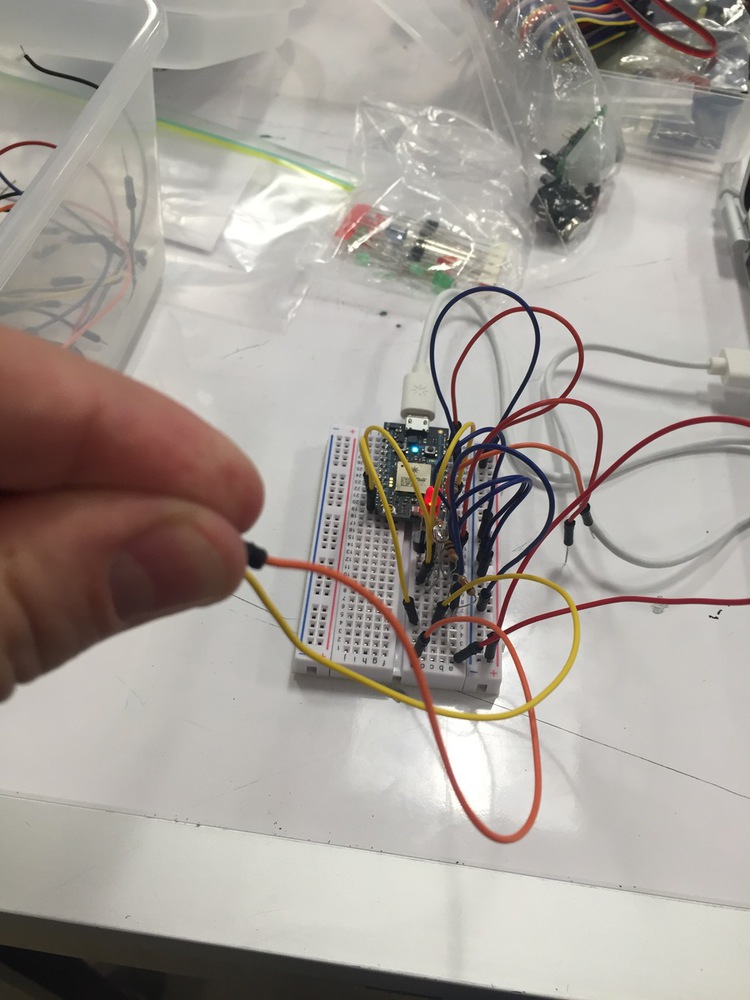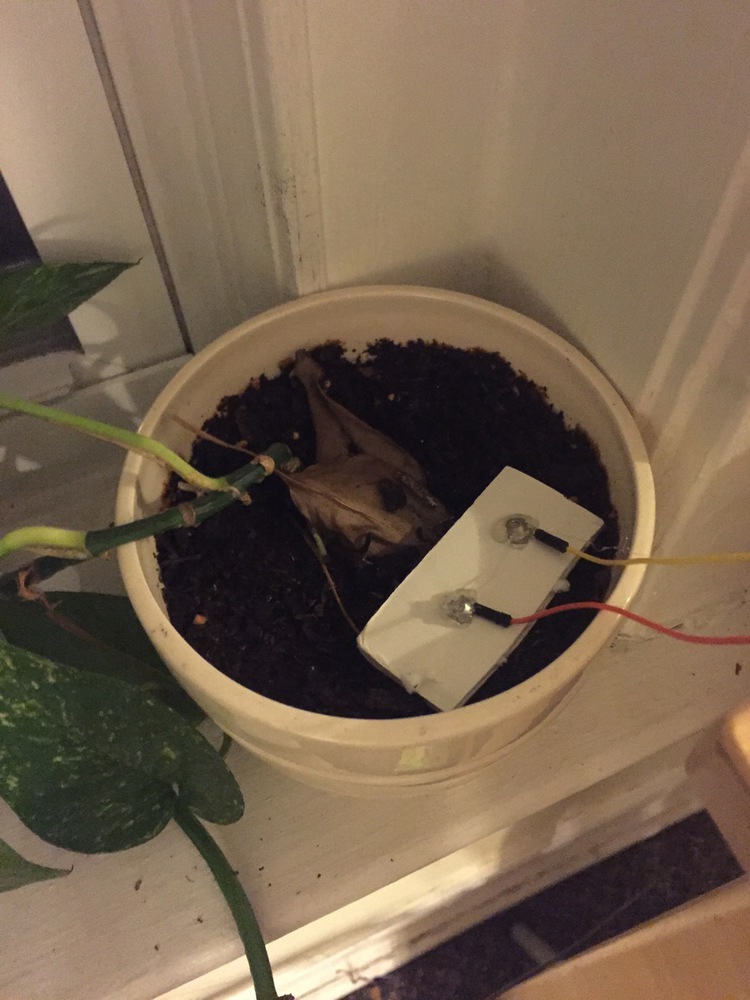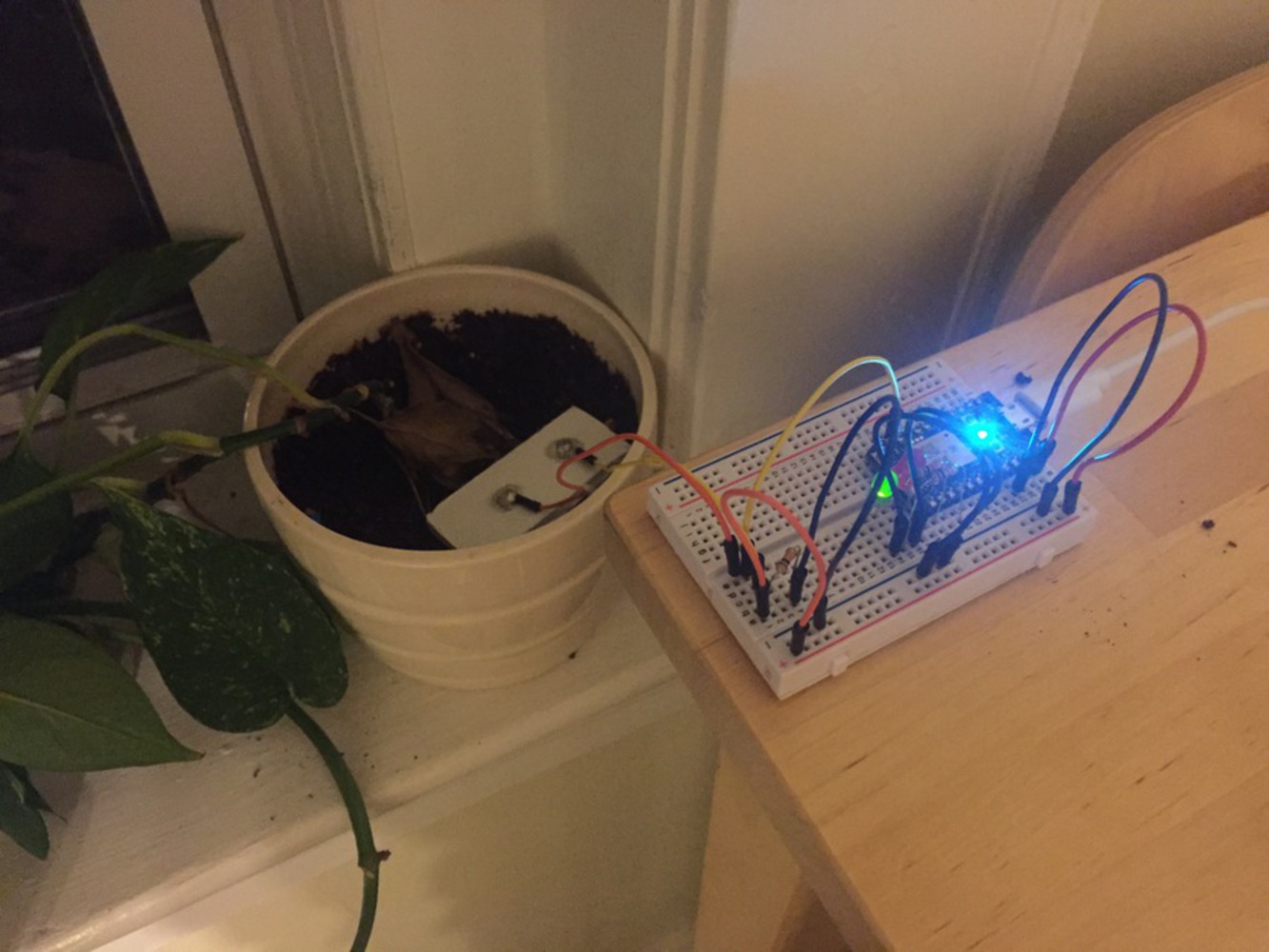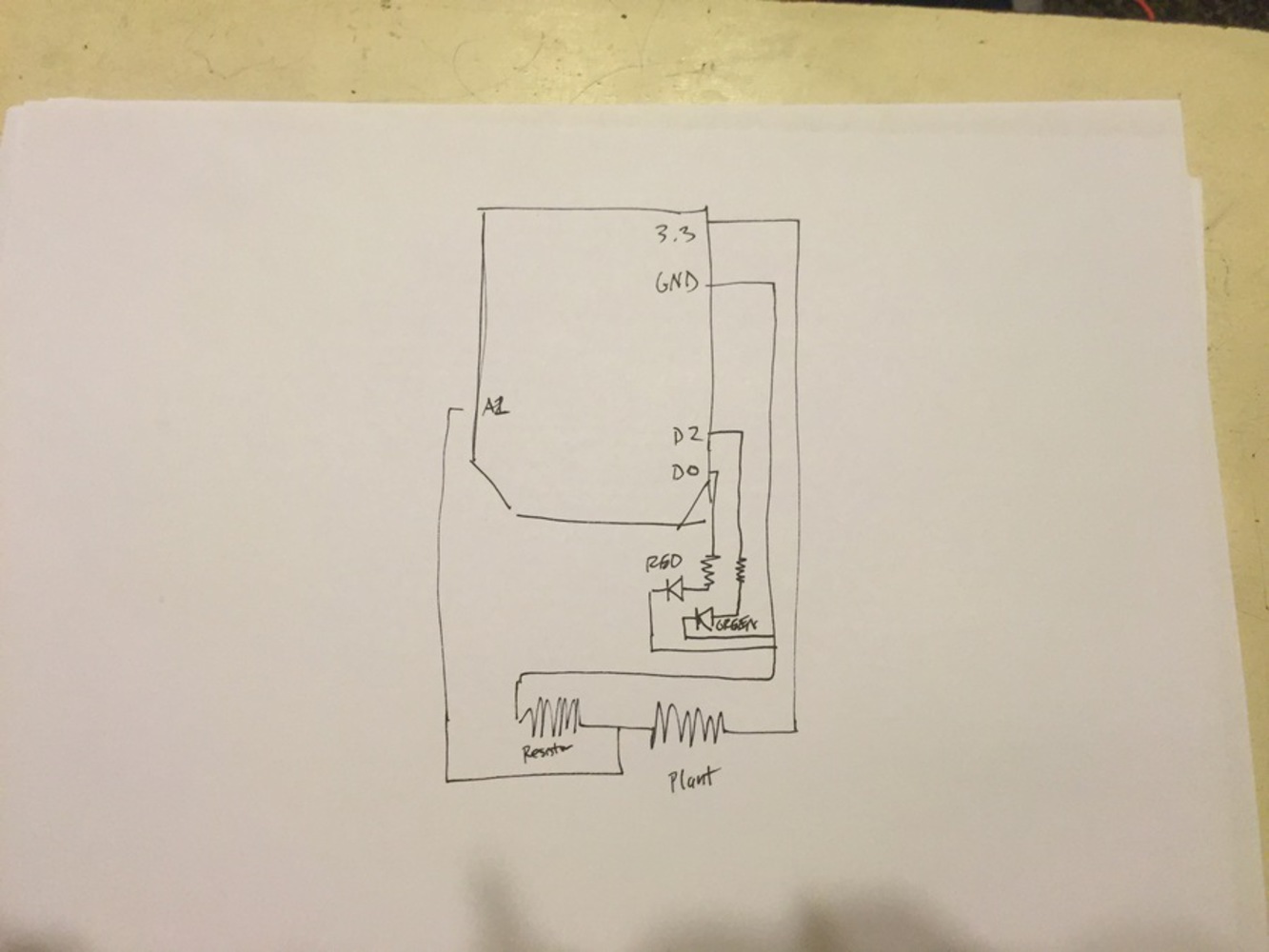Process
To complete this project, I used these components from the Photon Maker Kit: Photon with headers, USB cable, Mini Breadboard, 9 Jumper Wires, 1 green LED, 1 red LED, a 10k resistor, 2 1k resistors, two M3 screws and nuts, small piece of foamcore, and hot glue.
I started off with plans of making a device that sensed temperature, light and moisture. I utilized our class tutorials to develop circuits for each and then attempted to integrate their functionality then publish it on the web. I soon realized it would not be feasible in the time frame, so I simplified to the basic functionality that I desired: moisture sensing. I used the tutorial based on a photoresistor to develop my moisture sensing resistor and instead of the darkness causing the resistance to increase, the lack of moisture and the poor conductivity of dirt would cause high resistance. I then developed the LED scheme. I started with LEDs that went up and down based on the level of resistance, but realized that didn’t convey what would be important to the user: is the plant ok or not. So I switched to an If statement that controlled when the red and green LED would turn on. I also used this if statement to build in another if statement that published a signal to IFTTT which then sent a text message (Water your plant soon!) to my phone. The second if statement then names an integer the value of the current day. The publishing function checks this integer at the start of the process to see if it should send a message, so that it only sends 1 message a day. I prototyped in our lab with just our kit components, then created the dirt contacting parts at home. I initially had challenges with coding, but through instructor assistance and simplifying functionality I was able to get it to work.







